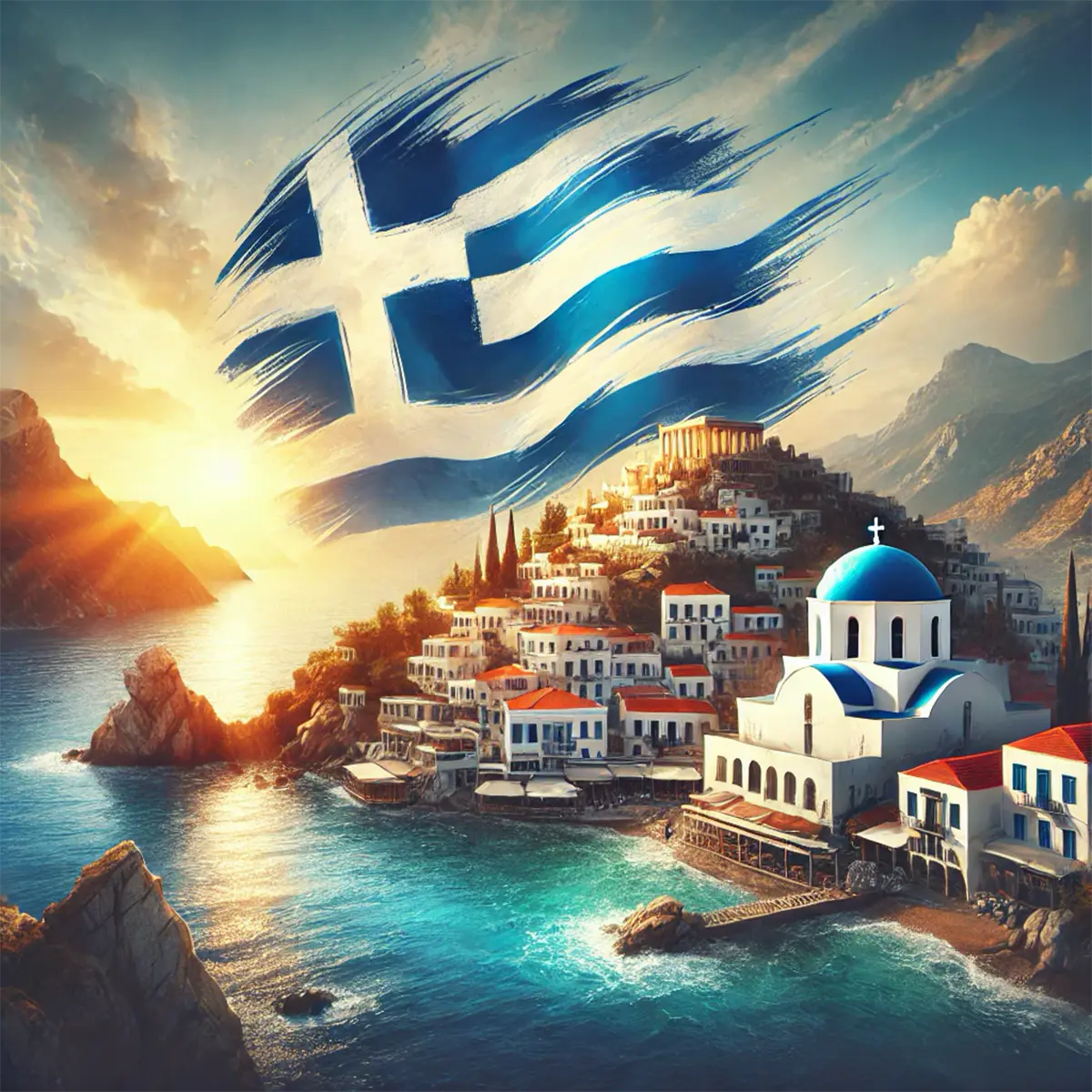In 1821, at the beginning of the Greek Revolution, each military corps had its own flag, as there was no single command. The revolutionary flags represented either the three-color symbolism of the Society of Friends (white, black and red) with images of symbols such as a phoenix rising from the ashes or an anchor, flags with a cross or an eagle, and so on. Many villages also used the flags of their parish churches.
In 1822, the First National Assembly was held in Epidaurus, which adopted the "Provisional Constitution of Greece," the first Greek constitution. In this constitution, it was decided that the Greek flag would have blue and white colors and that the shape would be set by the executive branch, i.e. the government. Thus, the basic principles of the Greek flag design were established, which are still observed today. On March 15, 1822, Decision 540 of the Executive Branch was issued, signed by the President of the Corps, Alexander Mavrokordatos.

In 1832, the royal emblem was added to the flags of the army and navy, but it was removed with the abolition of Otto's rule. Later, during the reign of George I, the royal crown was added to the army and navy flags, and the infantry flag was given the image of St. George. In 1914, a royal decree was issued that determined the shape of the flags without changing their basic characteristics. However, in 1924, the crowns were removed from the flags to implement the resolution of the Fourth Constituent National Assembly in Athens "On the Proclamation of Democracy," but they were returned in 1935. Subsequently, the colonels' junta removed the crown from the flags, and a new resolution in 1969 abolished the infantry flag, leaving the navy as the official flag. In 1970, the ratio of flags was changed from 2:3 to 7:12.
After the restoration of the Republic in late July 1974, a law and a presidential decree were issued that described the flag's symbols in detail. However, a subsequent law in 1978 established that the national flag should be blue and white and consist of nine horizontal stripes, the first and last of which should be blue. A white cross is placed in the upper left corner against a blue square. The ratio of flag width to length is 2:3.




